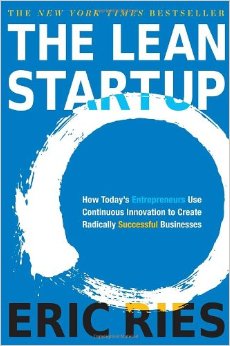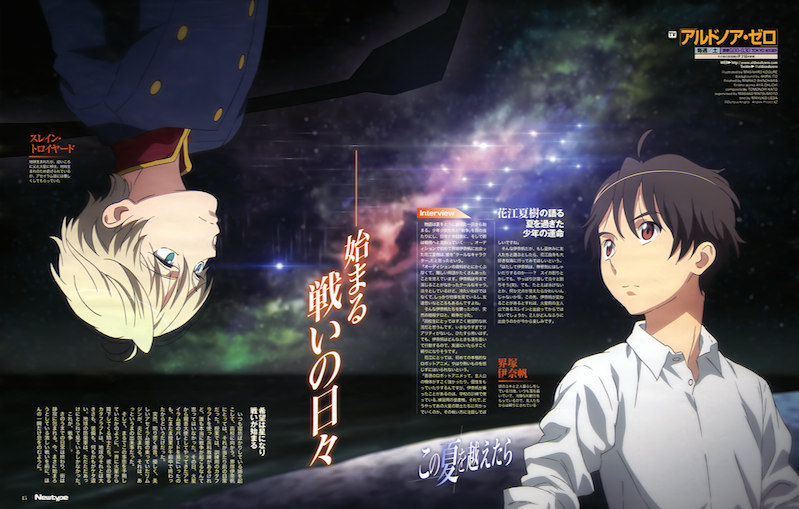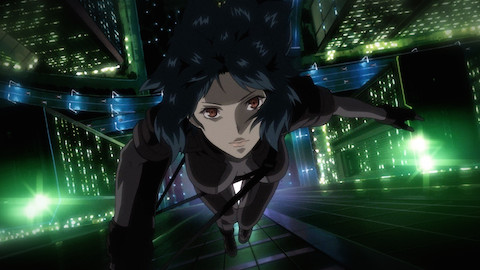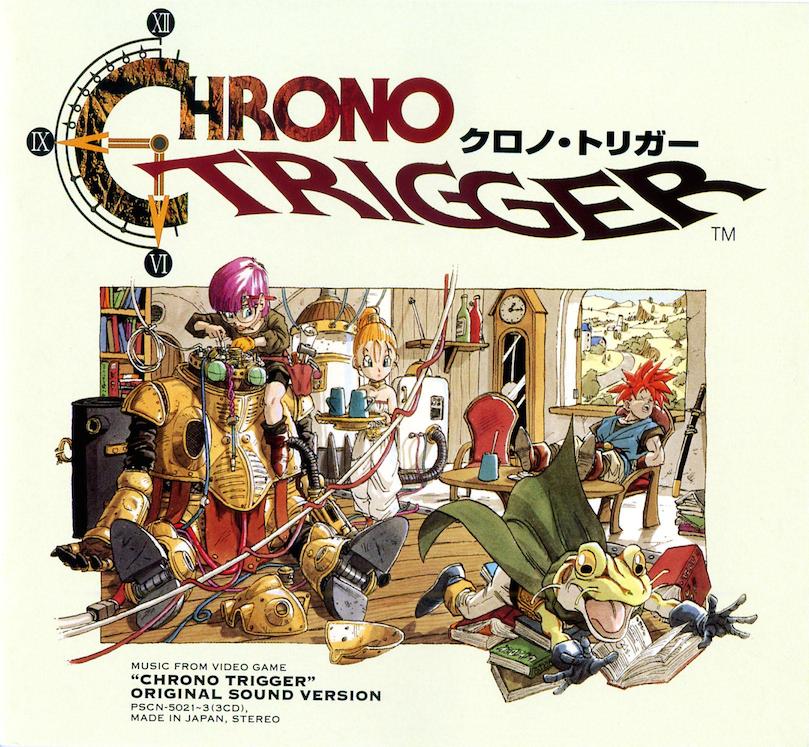Why Anime Stimulates Me Intellectually.
This is what’s going through my head when I watch TV, commercials and movies. Also, when I think about businesses and read articles online, I’m considering these dimensions of the topic at hand. I’m constantly mulling over these points and expanding my minds understanding of these aspects for pretty much everything.
★ How was this made?
★ How did they market this?
★ Who is their audience?
★ What inspired someone to create this?
★ Why are they passionate about these themes?
★ Why do they want these themes to be associated with their brand?
★ What is left out of the message?
★ What am I missing?
★ Why were these actors interested in this project?
★ What technology did they use to create this?
★ What projects are eclipsed by this project?
★ Why did they choose that location or setting?
★ Why is the english voice acting so bad? Is that just inherent in the American voice acting industry? lulz..
Concept => Manga => Anime
Some aren’t very familiar with the production process for anime. It starts out as a concept. Maybe it’s a project that someone has been working on for years. Maybe it’s a mixture of failed projects and only came together as several talented people decided to work together.
Regardless, the work progresses from concept to manga, only becoming anime after it’s been vetted twice. It’s not easy for your work to become manga, but the barrier to entry for a work to proceed from concept to manga is very small. This is because it doesn’t take too much investment to get the project started, in comparison to a major motion picture or a comic book in the US.
Kanban and The Lean Startup
Here’s where the parallels to the Lean Startup process begin. An idea is fleshed out as quickly as possible. Avid readers and passionate fans are able to vet the work almost immediately. The content is published periodically, in magazines that contain lots of various mangas. Because the content reaches such a niche, passionate audience so fast, these otaku are able to vet new series.

This process allows the creators to respond to their biggest, most passionate fans as the series is being conceptualized. This means the writers can make subtle changes to their character development, to their scenearios, themes and plot lines as the series is being written. While this process is not exactly new – much 18th century english literature was produced periodically – in today’s literature world it is best exemplified in anime.
The Lean Startup drew inspiration from Kanban, a design & manufacturing methodology originally popularized in Japan. Companies would focus on getting products to market as quickly as possible and focus on enabling a malleable production process. This allowed Japanese hardware companies to vet products, measure market demand and remain agile. After I spent much time this summer watching anime, I thought more about their process and realized it closely resembled Kanban.
This is very exciting. Just trust me.
Focusing on what matters.
Just. The. Content.
The best part of this process is that, though the works retain their flexibility to change in subsequent media, most of the details are locked down in the manga. This is the most flexible step of the process and it is incredibly simple. Most manga is black and white. There’s no special effects to worry about, nor massive teams to manage with even larger budgets.
Instead of focusing on all that without knowing whether or not people will invest in your work, the artists are able to produce original work with few restraints on creativity. Even better, this lightweight flexible process doesn’t change much after the work is vetted and it becomes anime: it’s still cheap to produce. And while it might not cost much to produce, it is rich in what matters most to literature & entertainment.
Three Dimensional Characters in 2D
The proportion of time & effort spent on imagining characters, themes, plot twists and scenarios is maximized, while what makes American media generic is left out. For example, the artists won’t be limited with special effects production cost or time because all they have to do is draw. So the content is not restricted by arbitrary limitations imposed by budgets and resources.
One of the best aspects of anime are the characters. If you pay close attention, you’ll notice that they are not just what they seem on the surface. There’s something deeper to them. In the best work, you can notice that someone spent a lot of time thinking about this character’s motivations and emotions, even though they’re just animated.
Aldnoah Zero’s Chess Scene
The scenarios are well thought out as well. In the most recent episode of Aldnoah Zero, one of my favorite simulcast anime’s at the moment, there’s a great chess scene that only lasts a minute. If you haven’t seen the show yet, watch it from the beginning – otherwise, you’ll ruin the plot for yourself! However, it’s in Season 2, Episode 15 and if you don’t pay attention, you’ll miss it.
Two of the characters are playing chess on a table-computer, similar to a Microsoft Surface. The chess board display is powered off initially and the characters are just calling out moves, like Knight D4, etc. In one of the first moves, you hear that Inaho loses his Queen to Magbaraedge’s King. If you’ve played chess, then you know that scenario won’t arise very often, which is what clued me in to pay more attention to the scene. You would almost have to intentionally do this, so I wondered if Magbaraedge had lost her queen yet, but the display was still powered off.
Magbaraedge responds. Then Inaho moves again. They play a few moves, then they power the display and you can see the board. Magbaraedge indeed still has her queen, but Inaho has been mostly keeping her in check. However, he opts to make another risky move, where he chooses to allow Magbaraedge out of check. This move confused me significantly, as Inaho had several safe moves available that would keep her in check. Instead he moves his bishop from behind his ranks to behind her pawns. It does not put additional pressure on her pieces.
At this point, it’s important to also note that her King was also out in front of her pawns, near G5. It took me a few minutes to realize why he made this move: he gave up the check on her King in order to cut of the King from retreat. He was playing the long game and slowly cutting off her options.
It was about this time when I started looking at how Inaho stacked his pieces: each of his Bishop/Knight/Rook pieces in play in the center of the board were backing up at least two other pieces and pressuring her pieces. His pawns were all diagonal and backing up his pieces in the center. Her pieces were not so well structured.
It turns out this scene was very important in order to cast light on other events in the episode. Best episode so far in a stellar series. This scene is amazing because it reveals the forethought placed into a seemingly simple scene. After all, it mostly took just a minute or two, but it took me ten minutes or more to watch, rewatch and reflect.
How did the producer’s come up with such a great scene? I suspect that a few of the artists were chess players and perhaps played chess games just to come up with the scene. Or maybe even searched through famous games to find one that helped accentuate the developments in the episode. Regardless, it’s an amazing level of detail for something that may have been overlooked by many viewers.

Marketing and Negotiation Tactics in Log Horizon
Another series I’m currently watching is Log Horizon. It’s pretty good so far. I’m not sure why it took me so long to start watching it. It involves players getting stuck inside an MMORPG game. I haven’t finished watching Sword Art Online and while both series are very good, these virtual world stories just didn’t immediately appeal to me for some reason.
In S1E7, one group of players has discovered how to make real food that actually has a taste in the world, whereas most of the virtual food is tasteless. They also have a need to make a lot of money, so they pull together and decide to launch a restaurant business. The episode is mostly about how they market their business, protect intellectual property (the means of making tasty food), estimate profits, and discuss pursuing investment from the three biggest merchant guilds in Akihabara. Again, there’s a surprising level of depth behind the decisions characters make and it exposes their thought process to you.
In the next episode, S1E8, the same group of players begins deliberation with the merchant guilds and the episode deals with negotiation tactics, a subject with many subtleties and paradoxes. For example, you need to withhold information, but be honest with your partners at the same time, while balancing that with your partners’ motivation for success. There are a lot of mistakes you could make and you not only have to understand the reasoning behind negotiation tactics, but your team needs to be able to pull it off too. If someone on your team is a weak link, they could ruin it by unintentionally disclosing information. The main character skillfully leads his other capable team members through the negotiations and they develop a beneficial partnership with said merchant guilds.
Intellectual Content
These are the kinds of intelligent subjects and themes anime shows seem to be able pull off – in a fantasy world setting, no less – while remaining entertaining. Not exactly the go to source of information for negotiation tactics, but still very thought provoking if you’re interested in it. Or perhaps an episode like this will introduce you to thinking about subjects like these.
And I haven’t even touched on the quality of sci-fi material in Anime. Shows like Ghost in the Shell and Lain are classics. They explore extremely deep themes regarding the impact technology would have on our lives. Ghost in the Shell originally came out in 1995, but has only become more relevant in 20 years, due to the insightful manner in which technology was portrayed. The best works are timeless: they gain meaning with age, but they always manage to stay relevant.

Not Too Short, Not Too Long, Just Right
If a TV show was four or five episodes long would you emotionally invest yourself in the characters? How about a movie? That’s about the same length right? You simply can’t accomplish in a movie what you can in a TV series. Some movies around 3 hours actually do manage to do well with this. If you notice, the works that win Oscars are usually around this length.
You could argue that a trilogy like Lord of the Rings has more play time. Yes, but as a movie being released in theaters, it takes too long to produce: 3 to 10 years. That kind of production time would have negatively impacted the reception of the Harry Potter movies. Usually long running book series like that can’t be transitioned to film without sacrificing content.
You’ll notice most anime shows only last one or two seasons, besides the mainstream ones like Hunter x Hunter or Naruto, which I haven’t watched yet, mostly because I don’t want to commit myself to watching hundreds of episodes. The pacing is crucial to anime and this length helps maintain pace for the show so that it remains exciting. Also, this length is perfect because the shows always end on a high note, in terms of quality. You know, like Seinfeld – they might be successful, but they know to stop when they’re ahead. After about 25 episodes, you get the feeling that you’ve gotten to know the characters and you’ve seen how they developed through the series.
From Light Novels and Visual Novels to Anime
Spending a lot of time watching anime this summer got me thinking a lot about how this content is produced. I’ve even got a few scenarios I’d like to combine for an epic sci-fi story. However, I think a video game would be the best setting for this. I doubt I’ll ever get around to it. It’s set slightly in the future (20 to 50 years) and deals with an version of reality similar to our own, but one that will likely never occur because of certain alternate developments in technology.
It’s also important to note that there are other starting points for anime, not just manga. A lot of series start out as Light Novels, such as Tokyo Ravens. A lot of particularly good stories start off as Visual Novels, such as Fate: Stay Night. However, you notice that these mediums still place the focus on characters and story.
By the way, I highly recommend Fate: Zero and Fate: Unlimited Blade Works. I’d recommend watching Fate: Zero first. Fate: Stay Night is also good, but 10 years old. It was the first anime produced for the series, but the series’ original animation may turn some people off. Fate: UBW is mostly the same story, but also completely different. These stories started off as Visual Novels, similar to RPG’s like Final Fantasy, but with more of a focus on choosing your own adventure. Because of this, they have mutliple storylines, adding an extra dimension of depth that is impossible to reproduce in anime. I really like these stories because they remind me of my favorite RPG’s Chrono Trigger and Chrono Cross. However, these anime’s based on visual novels don’t completely translate to the screen.

Retelling A New Story
I like the idea of iterating on the same story and producing similar versions, similar to how the Legend of Zelda series always takes you to a different version of the world. This keeps things interesting and offers new developments. This occurs occasionally in western literature, but mostly older stuff and sometimes it’s not officially the same story. For example, Romeo and Juliet is based on another story with the same title and it’s very similar, or so I’m told. This idea of retelling the same story in various ways seems to occur a lot in Eastern media.
Some people get very offended when details in a story are changed or altered across different media or when a series is rebooted. However, I think this is one of the greatest strenths of transitioning from manga to anime. Usually most of the changes aren’t significant, but occasionally they are. This can occasionally be negative, as most fans responded poorly to changes in story for Black Lagoon: Roberta’s Blood Trail. But IMO, it seems that the anime is the more polished, final vision of these manga.
This is just another way that anime ends up being more polished. I would bet that American media would be better if it followed some of the same process, jumping from Comics to TV. You could even transition from comics to live action and I think that would work. Obviously, this occurs in a lot of cases, but that’s not the intention; it just so happens that the comic book would be profitable to produce as a TV show or movie. However, I’ve heard that the US comic industry chokes out competition and that it’s very difficult for independent stories to get picked up.
Cosplaying FTW
I’m starting to get very interested in Cosplay as well. It seems like a great hobby to pick up that would not only introduce you to many materials design techniques, but it would also walk you through the creative process of pursuing a project from inception to design to realization. I’m sure it’s extremely competitive, but it seems like a lot of fun. Plus, I mean, how can you not? LOL

WCW: Maridah Cosplay as Asuna from Horizon in the Middle of Nowhere, this creative anime about a future society that must reenact history. Seriously, where do they come up with this stuff? [Correction: It’s actually Asuna from SAO and not Horizon]